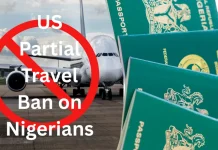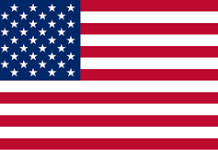Dubai’s diverse and vibrant hospitality sector is forecast to experience strong, sustained growth over the coming years, with occupied room nights set to reach 35.5 million annually in 2019, representing a robust 10.2 percent compound annual growth rate (CAGR) over the next 24 months.
According to a comprehensive study of the market by Dubai’s Department of Tourism and Commerce Marketing (Dubai Tourism), the emirate’s room supply is set to reach 132,000 by the end of 2019, growing at a 2-year (2017-2019) CAGR of 11.1 percent.
Meanwhile, occupancy levels are forecast to remain at an extremely healthy 76-78 percent despite growth in capacity, maintaining the attractiveness of the sector to hotel investors and developers.
The strong competitiveness of the sector is set to continue to be fuelled by increases in Dubai’s growing international overnight visitation and targeted increases in length of stays, supported further by recent and upcoming tourism attractions and experiences.
With concerted efforts to raise awareness in both established and emerging source markets, the duration of travel from new and existing segments are expected to see further growth in the medium term, positively impacting demand for room nights, which is in turn expected to outpace visitor growth over the coming 24-48 months.
“Dubai’s hotel industry remains at the forefront of cross-sector efforts to drive tourism growth, as we collectively work towards realising our Tourism Vision and enable our 2020 goals.
“Dubai’s position as the fourth most visited city in the world, and the consistent growth in overnight visitation, has been achieved in large part thanks to the efforts of our committed stakeholders in the domestic hotel and hospitality sector.
“With international and local investors, and operators continuing to actively pursue opportunities in Dubai, we expect to see not only sustained growth in inventory in line with our projected demand for occupied nights, but also further diversification across various asset classifications, to ensure that as a city we are the most globally competitive in providing our visitors the optimal range of options that cater to their preferences across the spectrum of hospitality offerings,” said Helal Saeed Almarri, Director General of Dubai Tourism.
At the end of 2017, Dubai’s hotel inventory stood at 107,431 rooms, with growth of 4 percent over the course of the year, and occupancy at a healthy and stable 78 percent despite capacity increase, thanks to the 6.2 percent growth in overnight visitors to 15.79 million.
The robust performance is particularly significant as it came amid challenging economic and political conditions across key source markets, including the volatility impact of fluctuating oil prices, Brexit and a strong US Dollar impacting Dubai’s global price competitiveness due to the fixed currency peg with the UAE Dirham.
Between 2013 and 2017, hotel inventory grew at a CAGR of 5.9 percent and a notable trend seen over that period was the development of more affordable mid-scale offerings, encouraged by Dubai Tourism incentives.
Building on the momentum since 2013, room inventory in the 3 and 4 Star categories is projected to continue to grow at 10 percent and 13 percent respectively through to the end of 2019.
This diversification of the hotel sector is part of the strategic focus on widening Dubai’s tourist base, enabling the city to attract larger volumes from new market segments across diversified source markets as evidenced by some clear preferences witnessed for more value friendly options suitable for longer stays and larger party sizes from key demand pockets.
Moving forward, further growth and demand for hotels and hotel apartments will be fuelled by the ongoing development of the overall tourism proposition in Dubai.
Following the 2016 introduction of Dubai’s theme parks – IMG Worlds of Adventures and the integrated Dubai Parks and Resorts – the properties have further enhanced the city’s attractiveness for families, while more recent additions such as Dubai Frame and Dubai Safari have already proven to be popular with both residents and visitors.
The 2017 opening of La Perle, the region’s first permanent theatrical show, added a fresh dimension to the cultural and entertainment scene in Dubai, while the Etihad Museum rounded off the historic side providing visitors with an immersive look at the story behind the formation of the United Arab Emirates.
One of the most integral supply drivers to support tourism growth is the aviation sector and Dubai’s evolution as a major tourism hub has been ably enabled by Dubai International Airport, which continued its reign as the world’s number one international airport in passenger traffic terms in 2017, delivering 88.2 million passengers, up 5.5 percent from 201 percent, with plans to expand capacity to 118 million by 2023.
Further growth in air traffic to Dubai will be also be fuelled by Dubai World Central, which in the longer term will ultimately have capacity to handle up to 240 million passengers a year.
Dubai’s retail sector also remained a core lever for tourism growth given that shopping has been a driver of tourist spend across most source markets.
As such, the planned infrastructure expansions reflect confidence in the demand from Dubai’s growing visitor volumes, with 900,000 square metres of new retail space set to come online through 2019, adding to the 600,000 square metres built between 2012-2017.
The size of the offering as well as its diversity – the emirate currently hosts 57.3 percent of global brands – has been furthered by Dubai’s Retail Calendar, which brings together the domestic industry around key retail-oriented festivals and seasonal activation to encourage greater consumption.
Source: Business Post














